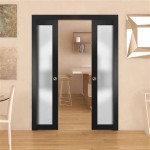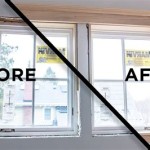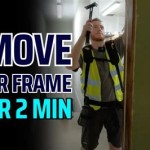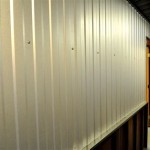Discover The Best Paint Sprayer For Interior Walls And Ceilings
Achieving a professional-looking paint job on interior walls and ceilings can be a daunting task. Traditional methods, like brushes and rollers, often lead to uneven coverage, brush strokes, and significant time investment. A paint sprayer offers an alternative, potentially providing a smoother finish and faster application. However, selecting the best paint sprayer for interior walls and ceilings requires careful consideration of factors such as paint type, project size, sprayer type, and user experience.
Paint sprayers are designed to atomize paint, breaking it down into fine particles and propelling it towards the surface. This process results in a uniform coating, minimizing imperfections and maximizing coverage. The benefits of utilizing a paint sprayer extend beyond aesthetics to include increased efficiency, reduced material waste (when used correctly), and the ability to reach tight corners and intricate details that might be challenging with conventional painting tools.
This article aims to provide a comprehensive overview of paint sprayers suitable for handling interior wall and ceiling painting projects. It will delve into the various types of sprayers available, their respective advantages and disadvantages, and critical considerations that will help inform a purchasing decision. The goal is to equip readers with the knowledge necessary to select the optimal paint sprayer for their specific needs and achieve professional-quality results.
Understanding the Different Types of Paint Sprayers
The world of paint sprayers encompasses a variety of technologies, each with its own strengths and weaknesses. Recognizing these differences is crucial for making an informed choice. The primary types include airless sprayers, HVLP (High Volume Low Pressure) sprayers, and pneumatic (air-powered) sprayers. Each type is differentiated by its atomization method and the pressure used to propel the paint.
Airless Sprayers: Airless sprayers function by pressurizing the paint itself and forcing it through a small nozzle, atomizing the paint into a fine mist. This type of sprayer is known for its speed and ability to handle thicker materials, such as undiluted latex paint. They are generally more powerful than other types of sprayers, making them suitable for large areas and projects requiring a high volume of paint application. However, airless sprayers can produce more overspray than HVLP sprayers, necessitating careful masking and ventilation. They also require more experience to operate effectively, as the high pressure can lead to runs and drips if not properly controlled.
HVLP (High Volume Low Pressure) Sprayers: HVLP sprayers use a high volume of air at a low pressure to atomize the paint. This results in a softer spray with significantly less overspray compared to airless sprayers. HVLP sprayers are favored for their precision and control, making them ideal for fine finishing work, intricate details, and smaller projects. They are also generally more user-friendly than airless sprayers. However, HVLP sprayers typically require more dilution of paint, and they may struggle with thicker materials. They are also slower than airless sprayers, making them less suitable for large-scale projects.
Pneumatic (Air-Powered) Sprayers: Pneumatic sprayers, also known as conventional air sprayers, rely on compressed air from an external compressor to atomize the paint. They offer a good balance between speed and control, and they are versatile enough to handle a wide range of materials. Pneumatic sprayers are commonly used in automotive painting and furniture finishing. However, they require a separate air compressor, which adds to the overall cost and complexity. They can also produce a significant amount of overspray if not properly adjusted and operated.
Key Considerations When Choosing a Paint Sprayer
Selecting the appropriate paint sprayer involves assessing several factors related to the project at hand and the operator’s experience level. These factors include the size of the area to be painted, the type of paint being used, the desired finish quality, and the budget available for the purchase. A thorough evaluation of these aspects ensures that the chosen sprayer will meet the project's demands and deliver satisfactory results.
Project Size and Scope: The size of the area to be painted is a primary consideration. For small rooms or accent walls, an HVLP sprayer might be sufficient. For larger rooms or entire houses, an airless sprayer will likely be more efficient. Consider the time commitment associated with each type of sprayer. Airless sprayers cover large areas quickly, while HVLP sprayers require more time but offer greater control. Also, consider the complexity of the project. Intricate details and trim work are better suited for HVLP sprayers, while large, flat surfaces are ideal for airless sprayers.
Type of Paint: The type of paint being used will influence the choice of sprayer. Airless sprayers are capable of handling thicker paints, such as undiluted latex, while HVLP sprayers often require thinner paints or the addition of a thinning agent. Check the manufacturer's recommendations for the paint being used and ensure that the chosen sprayer is compatible. Some paints may be too viscous for certain HVLP sprayers, leading to clogging and poor performance. Similarly, some paints may be too thin for certain airless sprayers, resulting in excessive runs and drips.
Desired Finish Quality: The desired finish quality is another important consideration. HVLP sprayers are known for producing a smooth, even finish with minimal orange peel texture. Airless sprayers can also produce a smooth finish, but they require more skill and practice to avoid imperfections. If a flawless finish is paramount, an HVLP sprayer is generally the better choice. However, if speed and efficiency are more important, an airless sprayer can still deliver acceptable results with proper technique.
Budget: The budget allocated for the purchase will also play a role in the selection process. Airless sprayers tend to be more expensive than HVLP sprayers, particularly the higher-end models. Pneumatic sprayers require the additional cost of an air compressor. Consider the long-term cost of ownership, including the cost of replacement parts, maintenance, and paint. While a cheaper sprayer may seem appealing initially, it may end up costing more in the long run if it requires frequent repairs or replacements.
Essential Features and Accessories for Interior Paint Sprayers
Beyond the basic type of sprayer, certain features and accessories can significantly enhance the painting experience and improve the final results. These features include adjustable pressure settings, spray pattern controls, multiple nozzle options, and efficient filtration systems. Selecting a sprayer with these features allows for greater flexibility and control, ensuring a more professional and consistent finish.
Adjustable Pressure Settings: Adjustable pressure settings are crucial for controlling the flow of paint and minimizing overspray. Lower pressure settings are ideal for delicate work and thinner paints, while higher pressure settings are suitable for thicker paints and larger areas. The ability to fine-tune the pressure allows for optimal atomization and reduces the likelihood of runs and drips. Look for sprayers with a wide range of pressure settings to accommodate various paint types and application techniques.
Spray Pattern Controls: Spray pattern controls allow for adjusting the width and shape of the spray pattern. This is particularly useful for painting different surfaces and reaching tight corners. A wider spray pattern is ideal for large, flat surfaces, while a narrower spray pattern is better suited for trim work and details. Some sprayers offer adjustable spray pattern orientations, allowing for vertical or horizontal spraying. This flexibility enhances the sprayer's versatility and makes it easier to achieve consistent coverage.
Multiple Nozzle Options: Different nozzle options allow for varying the spray pattern and paint flow rate. Smaller nozzles are typically used for thinner paints and smaller areas, while larger nozzles are used for thicker paints and larger areas. Having a selection of nozzles provides greater flexibility and allows for optimizing the sprayer's performance for different paint types and project requirements. Check the manufacturer's specifications to ensure that the sprayer is compatible with a range of nozzle sizes.
Filtration Systems: An efficient filtration system is essential for preventing clogs and ensuring a smooth, consistent spray. Filters remove debris and impurities from the paint, preventing them from obstructing the nozzle and affecting the finish quality. Look for sprayers with easily accessible and replaceable filters. Regularly cleaning or replacing the filters will prolong the life of the sprayer and maintain its optimal performance.
Additional accessories, such as extension wands for ceilings or hard-to-reach areas, flexible hoses for greater maneuverability, and paint containers of different sizes, can further enhance efficiency and convenience. Also, consider the availability and cost of replacement parts. A sprayer with readily available and affordable replacement parts will be easier and less expensive to maintain in the long run.
By carefully considering the type of sprayer, the project requirements, and the available features and accessories, it is possible to select the best paint sprayer for interior walls and ceilings. Taking the time to research and evaluate the various options will ultimately result in a more efficient and satisfying painting experience and a professional-quality finish.

Best Paint Sprayer Airless Electric In 2024 Brad The Painter

Best Paint Sprayers For Any Type Of Project The Home Depot

Paint Sprayer For Walls And Ceilings Guide Magnum By Graco

Using A Paint Sprayer Indoors How To Use An Indoor

How To Paint Popcorn Ceilings Other Ceiling Textures

All About How And Why To Use A Paint Sprayer Your Home

All About How And Why To Use A Paint Sprayer Your Home

Paint Sprayer For Walls And Ceilings Guide Magnum By Graco

Best Paint Sprayers For Any Type Of Project The Home Depot

The Best Paint Sprayers For Diyers Christine Nickerson Design
Related Posts








